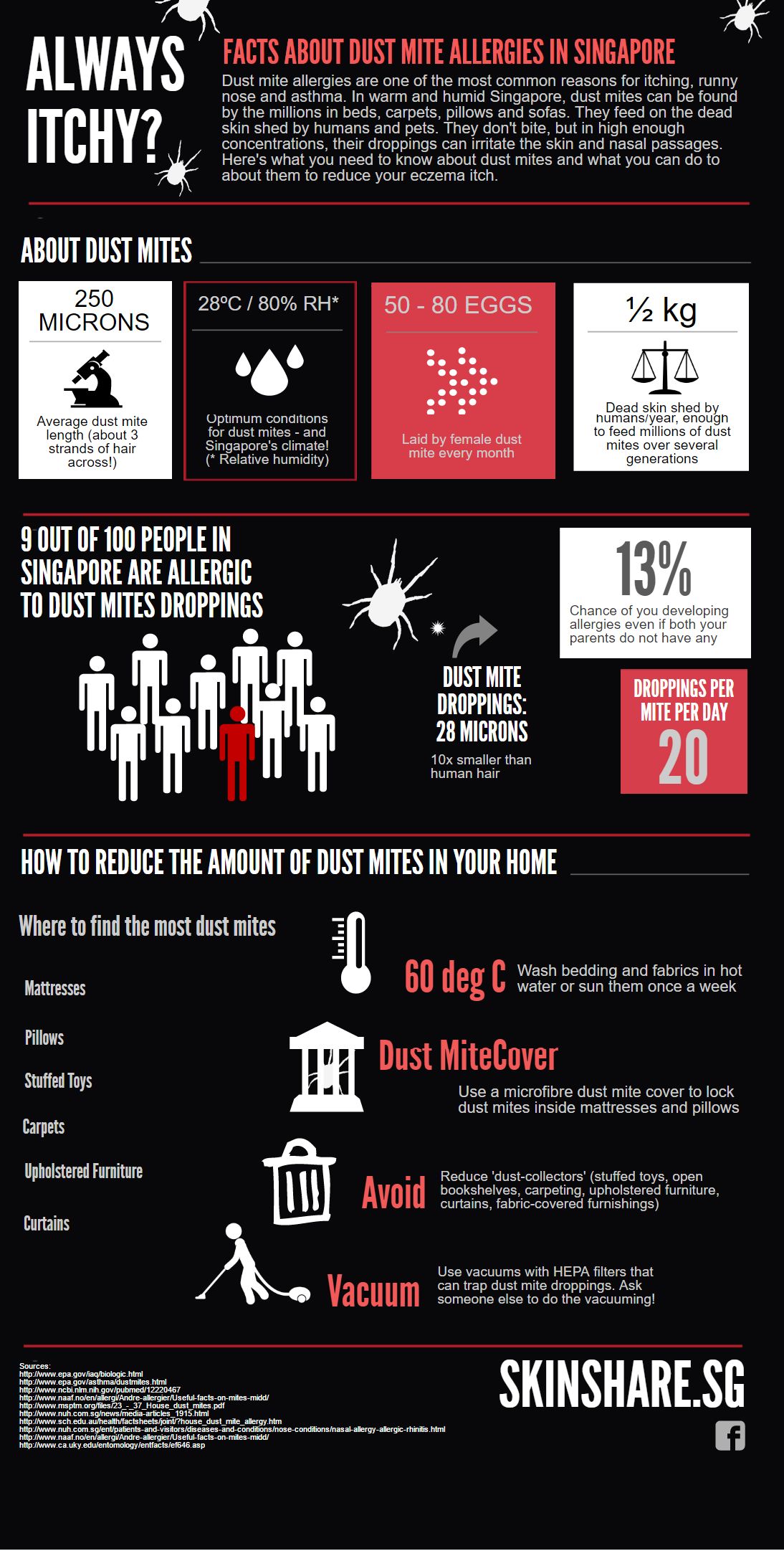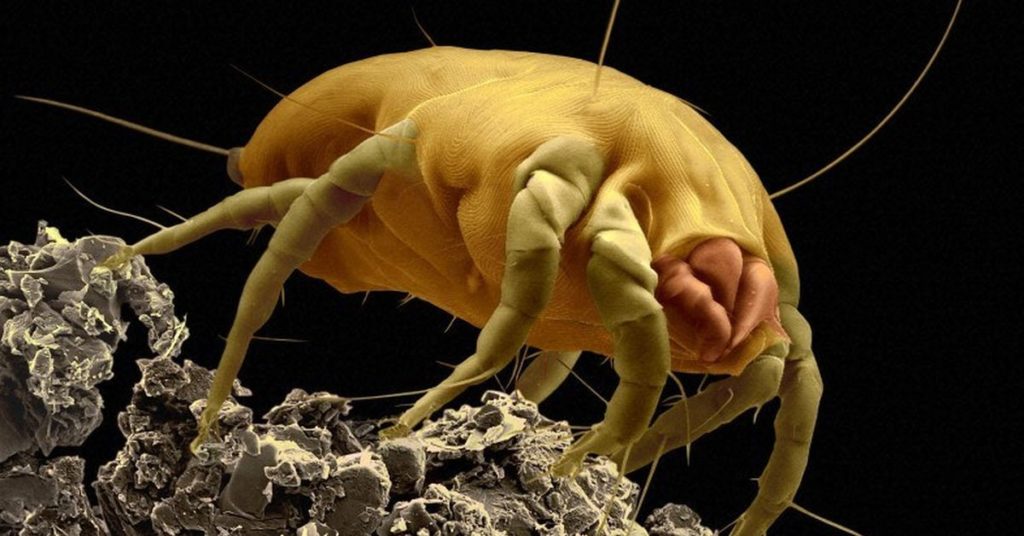If you have a dust mite allergy, you’re not alone. Dust mite allergies are one of the most common reasons for itching, runny nose and asthma.
In warm and humid Singapore, dust mites can be found by the millions in beds, carpets, pillows and sofas. They feed on the dead skin shed by humans and pets. They don’t bite, but in high enough concentrations, their droppings can irritate the skin and nasal passages.
This infographic tells you what you need to know about dust mite allergy and what you can do to about them to reduce your eczema itch.
 Highlights
Highlights
According to the National University Hospital of Singapore (NUH), 9 out of 100 people have a dust mite allergy, and are particularly allergic to dust mite droppings.
To understand why dust mites droppings are so potent in triggering eczema and runny nose, take a look at these facts:
- The average dust mite length is about 250 microns (about 3 strands of hair across!)
- Singapore’s climate provides optimum conditions for dust mite growth
- A single female mite lays 50 – 80 eggs every month
- Humans shed about 1/2 kg of dead skin every year, enough to feed millions of dust mites over several generations
To get rid of them:
- Wash bedding and fabrics in hot water (60 degrees Celcius) or sun them once a week
- Use a microfibre dust mite cover to lock dust mites inside mattresses and pillows
- Reduce “dust-collectors” (stuffed toys, open bookshelves, carpeting, upholstered furniture, curtains, fabric-covered furnishings)
- Use vacuums with HEPA filters that can trap dust mite droppings. Ask someone else to do the vacuuming!
The bottomline is: dust mites are bad, but their droppings are worse at irritating the skin. And dust mite dropping are REALLY small (28 microns, or 1/10th a human hair, so they can get past clothing and through vacuum bags.
 Highlights
Highlights

Pingback: 9 Things In Your Home That Could Be Making You Sick: #8 Got Me Itching Immediately - RecomN.com Blog
Pingback: What You Need to Know about Allergies in Singapore
Pingback: Why you may still need an air purifier in S’pore even if there’s no haze - All Tech News
Pingback: What You Need to Know about Allergies in Singapore - The Madras Tribune